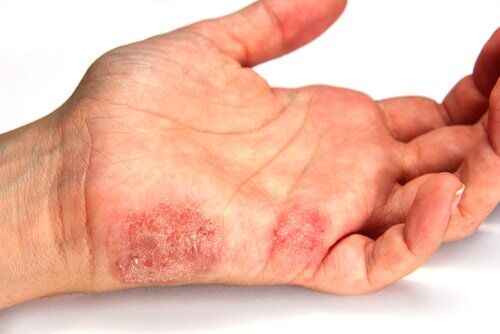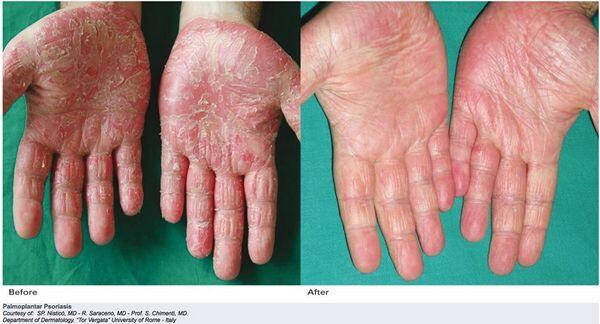Definition of Tinea Manuum
The term tinea manuum is used to refer to dermatophyte infections of one or both hands.

Geographical distribution of Tinea Manuum
The condition is worldwide in distribution.
Causal organisms
The anthropophilic dermatophytes E. floccosum, T. mentagrophytes var. interdigitate and T. rubrutn are the most common causes of tinea manuum. Less commonly, the condition is caused by zoophilic dermatophytes, such as M. canis and T. verrucosum, or geophilic dermatophytes, such as M. gypseum.
Hand infection may be acquired as a result of contact with another person, with an animal, or with soil, either through direct contact, or via a contaminated object such as a towel or gardening tool. Autoinoculation from another site of infection can also occur. Manual work, profuse sweating and existing inflammatory conditions, such as contact eczema, are predisposing factors.
Differential diagnosis of Tinea Manuum
Tinea manuum must be distinguished from other forms of dyshidrosis. This condition, whatever its origin, is usually bilateral or even symmetrical. In its typical form, clear vesicles are grouped on the lateral and volar aspects of the fingers as well as on the palm. There is little or no inflammation of the base. Dyshidrotic eczema is usually bilateral, but mycological examination is often required to distinguish it and other conditions (such as psoriasis, whether pustular or not) from tinea manuum.
Essential investigations and their interpretation
Direct microscopic examination of infected material, such as vesicle tops and contents and skin scales, should reveal the branching hyphae characteristic of a dermatophyte infection. Isolation of the aetiological agent in culture will permit the species of fungus involved to be determined.
Management of Tinea Manuum
Local treatment with a topical imidazole, such as clotrimazole, econazole, miconazole or sulconazole, or an allylamine, such as naftifine or terbinafine, will often suffice to clear tinea manuum.
In cases that fail to respond to topical treatment, oral terbinafine (250 mg/day for 2-6 weeks), or itraconazole (100 mg/day for 4 weeks) should be prescribed.




